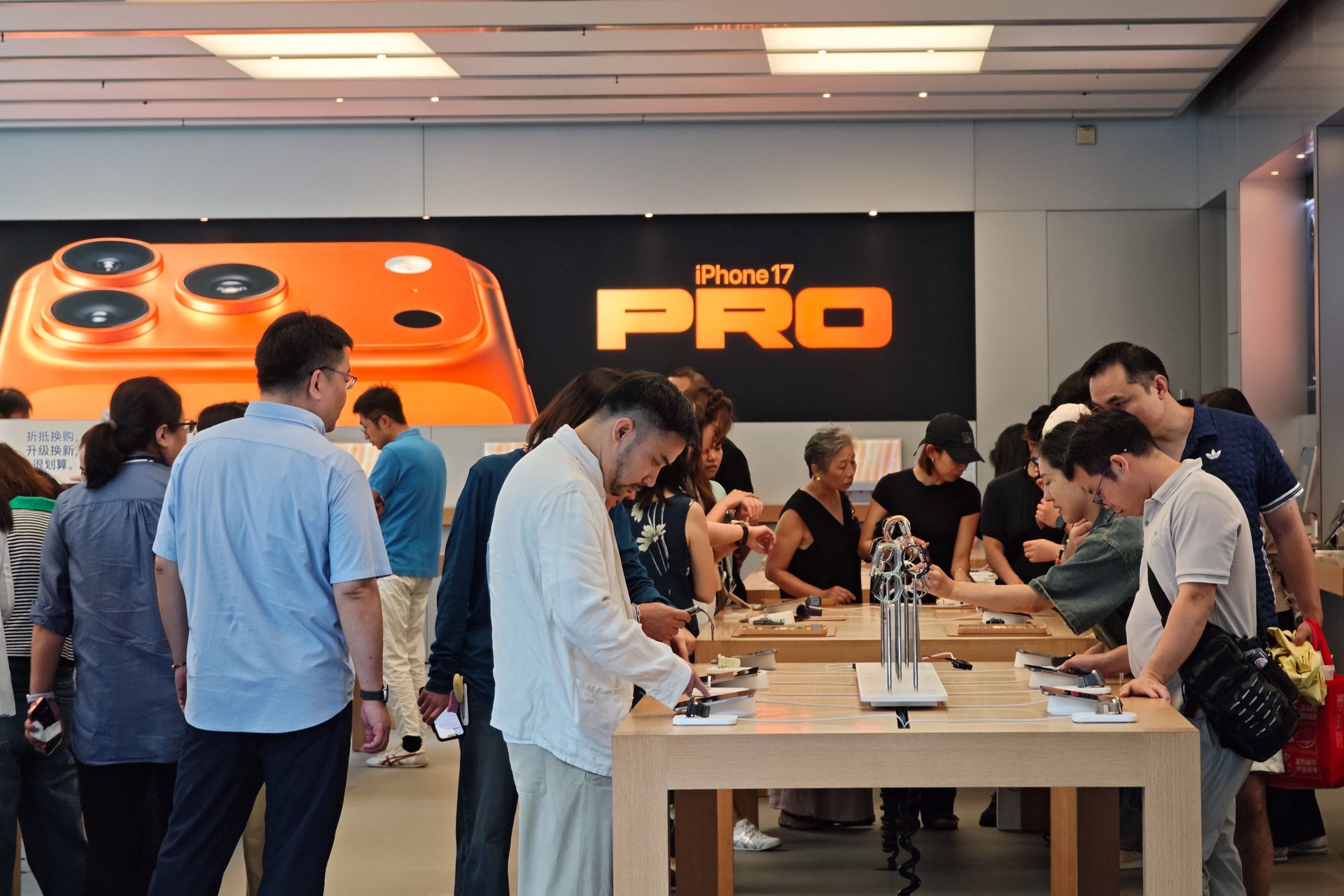Apple stock gets an analyst price target hike because the iPhone 17 is 'turning into a real upgrade cycle'
Wedbush’s Dan Ives says Apple has found a "magical formula" as iPhone 17 demand outpaces last year and forecasts get a bullish reset

Costfoto/NurPhoto via Getty Images
The iPhone 17 launch is showing the kind of bite Apple has been waiting for. Wedbush lifted its price target to $310 from $270 in a Monday analyst note, writing that early demand for the recent launch means this is “turning into a real upgrade cycle” for the company after years of softer launches, “based on the early strong demand signs.”
Suggested Reading
The bullish call from Wedbush — and lead analyst Dan Ives — comes after what analysts describe as a strong opening weekend for Apple’s latest product cycle. Ives wrote that he has been “positively surprised on the demand trajectory.” Wedbush estimates that iPhone 17 demand is running 10–15% ahead of last year’s iPhone 16, with supply checks in Asia already pointing to planned production hikes of about 20% for the base and Pro models. Shipping times tell a similar story: The iPhone 17 Pro Max has quickly become the hardest to find, with delivery dates stretching weeks in multiple regions.
Related Content
Ives wrote that he was expecting this upgrade cycle to be a “good, but not great one.” Instead, he said, a pent-up pool of about 315 million iPhones that haven’t been upgraded in four years — a backlog that, combined with modest design tweaks, seems to be driving stronger-than-expected replacement demand — is helping the company find “the magical formula out of the gates.”
The firm now argues that Street forecasts of 230 million iPhone units in FY26 look too low and pegs a more realistic range at 240 to 250 million units.
China remains the swing factor. Release-day photos showed hundreds lining up in Beijing around Apple’s Sanlitun flagship, a contrast with the gloomier tone that has been hanging over Apple’s China sales in recent years; JD.com flagged record Chinese preorders for the 256GB base iPhone 17. But the iPhone Air — pitched as the thinnest iPhone yet — is missing from the Chinese launch entirely while regulators review its eSIM-only design. Apple is betting that delay is temporary; the broader challenge will be sustaining momentum against Huawei and Xiaomi, whose high-end phones have eroded Apple’s market share in China in recent years.
Meanwhile, in India, preorders jumped around 19% year over year, breaking records and setting Apple up for India’s festival season, according to Counterpoint. And back in the U.S., carriers are offering generous trade-in promotions that are softening the blow of higher sticker prices — a sign that Apple knows cost sensitivity is, as ever, part of the equation.
The model mix tells its own story. The Pro Max appears to be the biggest retail draw, but the standard iPhone 17 is surprising analysts with online strength. Meanwhile, the Air is still widely available in most markets. Wedbush, however, thinks the Air “‘could be the surprise’ of this Apple upgrade cycle” based on in-store checks and conversations with customers.
Other firms are catching the same signals. Morgan Stanley and JPMorgan both flagged rising wait times as proof of stronger year-over-year demand, with JPMorgan nudging its Apple target to $280 on similar reads. UBS was more cautious, saying demand was “mixed”: Pro and Pro Max uptake is softer than the iPhone 16 at the same stage, while the new Air looks roughly in line with last year’s Plus.
Apple’s stock was up about 2.4% around 10 a.m. ET on Monday morning and is up close to 6% over the past five days.
Wedbush’s note also looked at “the elephant in the room”: Apple’s still-nebulous AI strategy. With 1.5 billion iPhones in circulation, the company has the largest potential user base in consumer tech — but it still hasn’t shown how it plans to monetize AI. Ives said Apple could lean more heavily on Google’s Gemini via search and system-level integrations, creating a revenue stream that the market hasn’t priced in.
“We believe the AI monetization piece could add $75 to $100 per share to the Apple story over the coming few years as it finally plays out after a very disappointing WWDC this past June,” Ives wrote. “We believe no ‘AI premium’ is factored into Apple's stock at current prices which makes this a compelling large cap tech name to own into year-end and 2026.”
For now, the iPhone 17 doesn’t appear to just be another incremental refresh. If the early lines, shipping delays, and production boosts hold up, Apple might be back in the middle of a genuine upgrade wave. After a few underwhelming cycles, CEO Tim Cook might have found his moment. As Ives said, this could be Cook’s “Ryder Cup” swing, not just another practice round.
